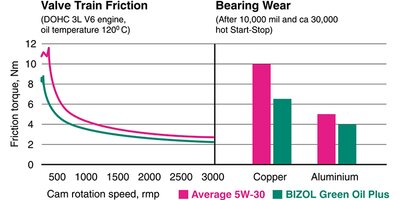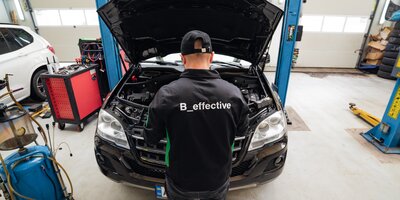HOW TO CLEAN BRAKE ROTORS: TIPS AND SOLUTIONS
How to clean brake rotors: tips and solutions
The cornerstone of a safe car ride is a reliable braking system. Since its components are situated close to the road, they are prone to faster corrosion. Dirt and moisture accumulate on the halting discs, gradually diminishing the system's responsiveness to your pedal commands.
In this article, we will explore the causes of mechanism contamination and various methods how to clean brake rotors, as well as discuss potential preventive measures to inhibit dirt buildup.
Why do the brake rotors become dirty
To gain a comprehensive understanding of this issue, it is essential to grasp the composition of the mechanism. Car halting rotors are typically made of steel, providing strength, durability, and heat resistance. However, steel also comes with some drawbacks, with corrosion being the primary concern.
Adverse weather conditions, such as rain, dirt, and road salt used during icy periods, take a toll on the rotors. The presence of excessive moisture and salt residues initiates the decomposition of steel, leading to the formation of rust. Even leaving the car in a damp environment for just one day can trigger the appearance of a rusty coating on the rotor's working surface.
Additionally, the regular functioning of the stopping system introduces two more sources of contamination. During stopping, the discs rub against the halting pads, generating dust that settles on the mechanism's surfaces. The second source is the leakage of oils and halting fluid, which mix with dirt, resulting in the formation of a dense adhesive layer on various parts. Each of these factors impacts how to clean disc brake rotors, and in some cases, it may necessitate a complete replacement of the components.
Symptoms of brake rotors being dirty
Experienced drivers often identify problems by the feel and behavior of the car. For example, signs of disk contamination include:
– unusual sounds, like a screech, when stopping,
– vibrations in the brake pedal or steering,
– increased stopping distance,
– the vehicle pulls to one side when the brakes are applied firmly.
Spotting these signs is only half the battle. Now, we need to address the issue. For this, you have the option to either replace the stop discs or clear them. As for the latter solution, there are several methods available, which we will discuss later.
Why it is important to clean the brake discs
The deceleration system is a crucial component of a car, vital for safety and accident prevention. It is advisable to inspect the cleanliness and condition of the stop discs during each visit to the service station. Maintaining the mechanism properly offers several advantages:
-
prompt detection of faults: clear discs allow for easier identification of leaks, chips, or cracks, enabling timely repairs;
-
prevention of rust spread: regular cleaning helps prevent rust from spreading to other parts of the braking system, preserving its longevity;
-
elimination of brake squeaks: clear discs contribute to reducing halting noise and ensuring a smoother driving experience;
-
enhanced deceleration performance and longevity of discs: properly maintained and clear discs result in improved braking efficiency and a longer lifespan for the components.
Regular upkeep of the halting system ensures its optimal functioning and contributes to a safer driving experience overall.
How to clean brake rotor
There are various methods on how to clean brake discs from dirt. Their effectiveness varies based on the degree and type of contamination. Let's explore these methods in more detail.
How to clean brake discs without removing wheel
Removing the wheels is a long and laborious process, so you want to quickly clean the halting discs without any extra work. However, the rotors are the inner part of the stopping system and are difficult to get to. Therefore, if you notice a serious deviation from the norm or see rust, we recommend that you sign up for a service station and fully, effectively clean the rotors.
How to clean brake rotors with removing wheel
When it became evident that the self-surface clearing was ineffective, and rust persisted, a thorough cleaning of the brake discs becomes necessary. For this procedure, it is best to entrust it to a specialist who knows how to clean disc brake rotors. However, if you have the opportunity and desire to do it yourself, we recommend following this step-by-step algorithm:
1. Raise the vehicle using a lift or jack.
2. Loosen the screws and remove the wheels from the car.
3. Take off the calipers and brake discs.
4. Apply a specialized cleanser to the brake discs.
5. Gently scrub the rotors with a cleaning brush to soften the corrosion.
6. Use a stainless steel wire brush to remove rust in a circular motion.
7. Reinstall all parts and securely tighten all screws and nuts.
8. Lower the car back down.
This method of clearing is considered highly effective, allowing you to eliminate even the smallest formations that could lead to new corrosion. However, if you're uncertain about the process, seeking professional assistance is still the safest option.
What to clean brake rotors with
We recommend using special technical sprays as they are highly effective. These aerosols can dissolve any deposits, displace moisture, and provide protection against the reoccurrence of corrosion.
Alternatively, you can also explore folk clearing methods, such as soaking the rotors in soapy water or white vinegar. However, it's essential to note that these materials may be more budget-friendly but are generally less effective in comparison to the specialized sprays.
How to care for brake discs after cleaning
After cleaning, you can apply a protective grease on non-working areas of the discs to guard against future corrosion, effectively preventing its recurrence. Additionally, when you plan not to use the car for an extended period, treating the rotors with an anti-corrosion spray is advisable. Any residue from the spray will naturally dissipate during the first ride.
Removing dirt from the discs is a crucial aspect of car maintenance, as driving safety directly depends on it. By now, you are aware of the signs that may indicate the formation of plaque on the brake discs. We have also discussed what to clean brake rotors with to get rid of dirt and rust. Properly caring for the brake discs can prevent this undesirable phenomenon and save you significant time, effort, and money on repairs.
You might also like

Prof. Dr. Boris Zhmud, Head of R&D, BIZOL Germany

Within the realm of automotive care, few substances are as vital as motor oil, in ensuring the seamless operation of a vehicle's propelling device. It serves as the lifeblood of a motor, ensuring that the intricate machinery operates efficiently and without unnecessary friction. The functions of motor lubricant substance extend far beyond just lubrication, encompassing a range of critical tasks that contribute to the longevity and performance of a propelling mechanism. In this article, we’ll delve into the multifaceted functions of motor oil and explore how it plays a pivotal role in maintaining the health of automotive powerhouses.

The modern marvel of an internal combustion motor powers our vehicles, providing the strength and reliability we rely on for daily transportation. However, just like anything else subjected to constant use, motorized units experience wear and tear over time. Component deterioration can significantly impact performance and longevity. In this article, we will delve into the intricacies of engine wear meaning, explore the various causes behind it, provide actionable tips to reduce and prevent it. Furthermore, we will look at how specialized engine oils, such as BIZOL, play a crucial role in safeguarding your engine’s health. Let’s begin by understanding what engine wear is and the factors that contribute to it.

